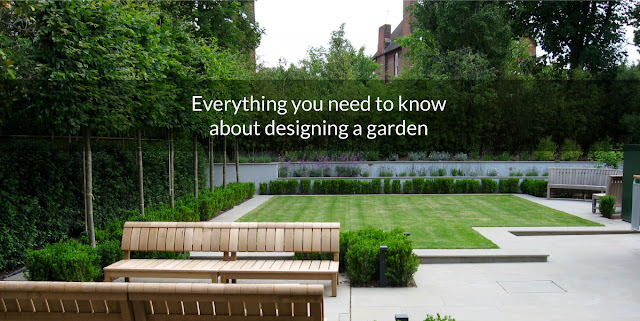The Fundamentals of Landscape Design
 |
| Fundamentals of Landscape Design
The fundamentals of landscape design are the essentials of
designing for places like landscape design, painting and floral design. Following are the 4 fundamentals of landscape design are as
follows: 1. Balance and order in landscape design The balance and order fundamental considers structure
and balance in landscape design. The three-dimensional layout of the landscape,
encompassing the lay of the land as well as plants and structures, is referred
to as spatial organisation. Equivalent "visual weight" is an analogue
for balancing. The objective is to achieve equilibrium from side to side and
front to rear. When one side of a traditional landscape is a mirrored image of
the opposing side, symmetrical balance is used. In these environments,
geometric patterns are widely employed in the pathways, planting beds, and even
in the manner that plants are clipped into formations. This balance seems to be
rigid and is regularly kept in good condition. Asymmetrical balance seems
relaxed and fluid flowing from one side to the other. These concepts are used
by landscape designers Wimbledon
to create aesthetically pleasing and even welcoming settings. These ideas are
more commonly found in people's innate visual senses than they were ever
created by artists centuries ago. 2. Simplicity in landscape design Landscapes should generally be kept simple, uncomplicated,
and fuss-free. This is not complexity's opposite. Many landscapes include
incredibly detailed elements including exquisite lighting, water features, and
building architecture. Landscapes liked by people avoid utilising too many
colours, curves, forms and textures, however this does not mean they
are simple, unimaginative, or uninspired. 3. Proportion in landscape design Proportion is the relationship between the sizes of all the
landscape's components. There are specific, vertical, and horizontal linkages
all together. Young people, tall people, and those with low stature all have
varied perceptions of space. Building size, plant size, lot size, planting
areas to open space and landscape purpose are all considered in terms of
proportion in the landscape design
Wimbledon. 4. Unity in landscape design "Unity in design" refers to how all of the diverse
elements of the landscape work together to create a wonderful overall design. A
coherent environment is made up of a variety of elements, including colours,
shapes, sizes, textures and others. Recurring colours and patterns are common.
To create a cohesive atmosphere, lighting, distinctive features, bed designs,
and landscapes like walk ways must all work together. By adhering to these fundamentals of design, anyone will be able to create a visually attractive landscape in any place, large or little. For more details, kindly visit our website https://www.justingreer.co.uk/ . |



Comments
Post a Comment